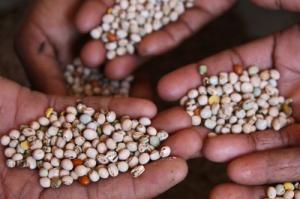MONDAY 23 APRIL: Released on the eve of the World Bank Conference on Land and Poverty in Washington DC, April 23-26, 2012, two new films reveal widespread violations of people's rights and environmental destruction from land grabbing in Africa. [1]
The films, released by La Via Campesina and Friends of the Earth International, are first-hand accounts of how privatisation of land, and corporate-friendly policies promoted by the World Bank lead to violent displacements, hunger and facilitate the global takeover of community land by private interests.
In Mali, Libyan multinational corporation MALIBYA has been awarded 100,000 hectares of prime agricultural land to grow export crops and livestock. The 25 Billion dollar project includes building one of the largest irrigation canals in Africa allowing Mali's precious water supply to be used by MALIBYA. The project is intended to develop agricultural industry through foreign direct investment -- a strategy aggressively promoted by the World Bank. In reality it has already violently displaced hundreds of families and demolished entire villages. Farmers are deprived of their livelihood and the capacity of the local people to feed themselves is hampered.
In Uganda, the World Bank has provided millions in funding and technical support to a large scale expansion of palm oil at the expense of local food crops and forest. Communities are losing access to land for farming, firewood, forest products and water supplies. Despite promises of employment, local people have lost their means of livelihood and are now struggling to make ends meet. Nearly 10,000 hectares are already planted in islands off Lake Victoria with 30,000 more planned. [2]
The World Bank conference brings together investors, governments, International Financial Institutions and civil society to discuss land governance. Yet previous policies of the World Bank such as turning communal land rights into private land titles, encouraging private finance to invest in land and providing technical and policy support for foreign land investments has set the stage for a global land grab on a massive scale. Voluntary 'Principles for Responsible Agricultural Investment' (RAI), being promoted by the World Bank currently are toothless and unlikely to halt land grabbing. [3]
80 to 227 million hectares of land have already been leased or bought up in recent years, mainly in developing countries, to produce food or fuel for the international market. Thousands of people have been dispossessed and had their Human Rights violated. [4]
Civil society groups will voice their opposition to the RAI at the World Bank Conference in Washington DC. Meanwhile, A broad range of social movements are calling on Governments to take strong action to stop land grabbing by: [5]
• Implementing genuine agrarian and aquatic reform programmes
• Directing public investment towards peasant agriculture, family farming, artisanal fishing and indigenous food procurement systems that are based on ecological methods
• Putting in place policies to stop overconsumption that drives land grabbing -- such as agrofuels mandates and high meat diets in the EU and US
• Rejecting the RAI principles and instead abiding by their Human Rights obligations as outlined in the 'Voluntary Guidelines for land and natural resources tenure negotiated at the Committee on World Food Security.
The films, released by La Via Campesina and Friends of the Earth International, are first-hand accounts of how privatisation of land, and corporate-friendly policies promoted by the World Bank lead to violent displacements, hunger and facilitate the global takeover of community land by private interests.
In Mali, Libyan multinational corporation MALIBYA has been awarded 100,000 hectares of prime agricultural land to grow export crops and livestock. The 25 Billion dollar project includes building one of the largest irrigation canals in Africa allowing Mali's precious water supply to be used by MALIBYA. The project is intended to develop agricultural industry through foreign direct investment -- a strategy aggressively promoted by the World Bank. In reality it has already violently displaced hundreds of families and demolished entire villages. Farmers are deprived of their livelihood and the capacity of the local people to feed themselves is hampered.
In Uganda, the World Bank has provided millions in funding and technical support to a large scale expansion of palm oil at the expense of local food crops and forest. Communities are losing access to land for farming, firewood, forest products and water supplies. Despite promises of employment, local people have lost their means of livelihood and are now struggling to make ends meet. Nearly 10,000 hectares are already planted in islands off Lake Victoria with 30,000 more planned. [2]
The World Bank conference brings together investors, governments, International Financial Institutions and civil society to discuss land governance. Yet previous policies of the World Bank such as turning communal land rights into private land titles, encouraging private finance to invest in land and providing technical and policy support for foreign land investments has set the stage for a global land grab on a massive scale. Voluntary 'Principles for Responsible Agricultural Investment' (RAI), being promoted by the World Bank currently are toothless and unlikely to halt land grabbing. [3]
80 to 227 million hectares of land have already been leased or bought up in recent years, mainly in developing countries, to produce food or fuel for the international market. Thousands of people have been dispossessed and had their Human Rights violated. [4]
Civil society groups will voice their opposition to the RAI at the World Bank Conference in Washington DC. Meanwhile, A broad range of social movements are calling on Governments to take strong action to stop land grabbing by: [5]
• Implementing genuine agrarian and aquatic reform programmes
• Directing public investment towards peasant agriculture, family farming, artisanal fishing and indigenous food procurement systems that are based on ecological methods
• Putting in place policies to stop overconsumption that drives land grabbing -- such as agrofuels mandates and high meat diets in the EU and US
• Rejecting the RAI principles and instead abiding by their Human Rights obligations as outlined in the 'Voluntary Guidelines for land and natural resources tenure negotiated at the Committee on World Food Security.

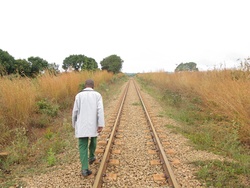
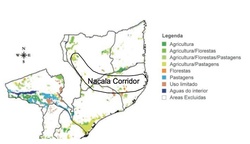
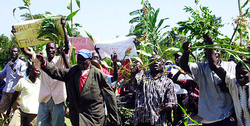
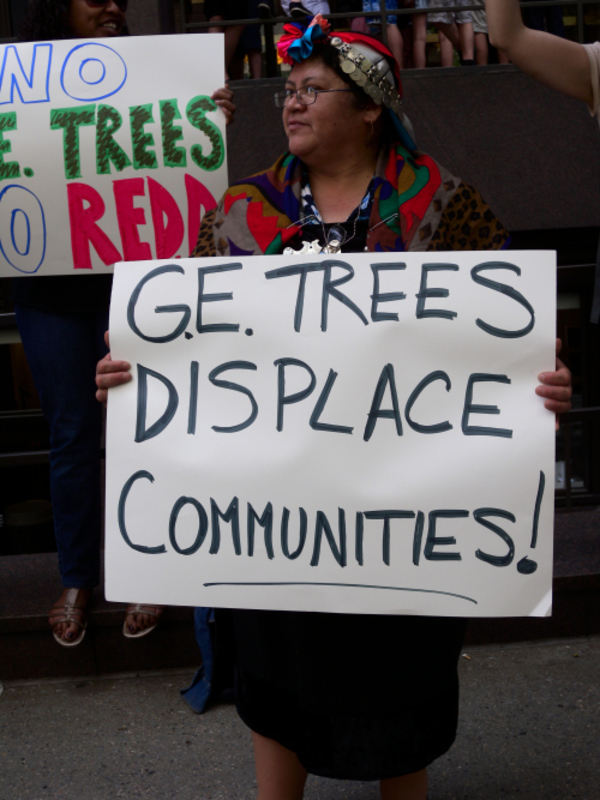 Mapuche woman protests outside of the Belgian Mission in Manhattan. Photo: Langelle
Mapuche woman protests outside of the Belgian Mission in Manhattan. Photo: Langelle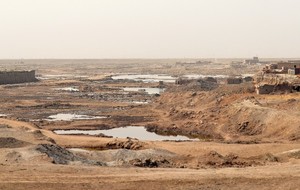 According to passages from the Bible, the dehydration of the Euphrates River would portend the end of the world. Photo by Julia Harte.
According to passages from the Bible, the dehydration of the Euphrates River would portend the end of the world. Photo by Julia Harte.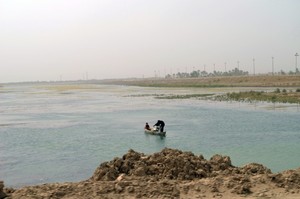 Not gone yet: what remains of the Euphrates River is helping replenish the central marshland -- and the culture of the Marsh Arabs. Photo by Julia Harte.
Not gone yet: what remains of the Euphrates River is helping replenish the central marshland -- and the culture of the Marsh Arabs. Photo by Julia Harte. 